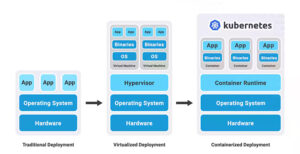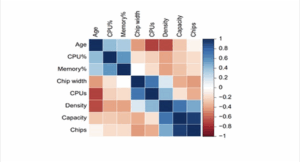Transformers are a neural network (NN) architecture, or model, that excels at processing sequential data by weighing the importance of different parts of the input sequence. This allows them to capture long-range dependencies and context more effectively than previous architectures, leading to superior performance in natural language processing (NLP) tasks like translation and in computer […]
A practical guide to microcontroller structure and performance factors
Microcontroller units (MCUs) are single-chip computers optimized for performing embedded computing tasks like controlling a coffee machine or a medical device, an industrial robot, or an electric vehicle battery charger. They don’t require a complex operating system (OS) like those found on personal computers and servers. The central processing unit (CPU) is a key element […]
Reimagining EV design with AI-enhanced EDA tools
Artificial intelligence (AI)-driven chatbots, tools, and techniques are being deployed across various stages of electric vehicle (EV) design and simulation to support validation and manufacturing. AI can be used as an assistant to increase the effectiveness of conventional EDA tools. When combined with data-driven methods, it can also be used to create reduced-order models (ROMs) […]
Are there any benefits from generative AI hallucinations?
Generative artificial intelligence (AI) hallucinations, where an AI delivers incorrect or fabricated information, can offer benefits, especially in creative and exploratory domains like drug discovery. There are four common types of AI hallucinations (Figure 1). Not all types are equally desirable or useful. General contradictions include context conflicts and sentence contradictions. For example, an AI […]
Why is the Matter 1.4.2 update important?
Matter 1.4.2 is a maintenance release that improves security, streamlines certification, and optimizes infrastructure operation. This article presents only highlights. In addition to improving certain areas of performance, it adds more new features than most maintenance releases. And, like most maintenance releases, it addresses issues found in previous versions and fine-tunes operations to improve reliability, […]
When should you use RAG, TAG, and RAFT AI?
Retrieval-augmented generation (RAG) and table-augmented generation (TAG) are both techniques to improve the ability of artificial intelligence (AI) to generate accurate and relevant information by leveraging external data. Other choices include retrieval-augmented fine-tuning (RAFT) and retrieval-centric generation (RCG). Understanding when to use RAG, TAG, RAFT, and RCG can be crucial to successful and efficient AI […]
What is JESD209-6 and why is it important for edge AI?
JESD209-6, the recently released LPDDR6 (low power double data rate 6) standard by JEDEC, represents a significant leap forward in memory technology, particularly for devices with limited power budgets. It’s crucial for the next generation of mobile devices, AI applications, and edge computing, where high performance and power efficiency are paramount. It’s also expected to […]
What kinds of tools are available for optimizing edge AI performance?
Developers can turn to model optimization frameworks and libraries, model optimization, distillation, and compression tools, plus hardware-specific optimization tools and development platforms for optimizing edge AI performance. Kubernetes and containerization provide additional tools for optimizing AI edge performance. Frameworks and libraries are collections of pre-written code. Libraries are collections of components, classes, and methods that […]
How can silent data corruption be detected and corrected in AI systems?
Silent data corruption (SDC), sometimes called bit rot or silent data errors (SDEs), refers to errors in data that are not detected by standard error-checking mechanisms, leading to potentially significant data loss or incorrect calculations. SDCs can lead to inaccurate training, incorrect predictions, and unreliable performance. Detecting SDC requires specialized techniques and tools. SDCs can […]
How can neuromorphic devices be harnessed in edge AI computing?
Neuromorphic computing, which mimics the human brain’s architecture and function, can be leveraged in edge computing to improve power efficiency, speed, and adaptability. By processing data locally and using event-driven computation, neuromorphic chips can optimize resource usage in edge AI applications, reducing reliance on centralized cloud processing. Spiking neural networks (SNNs) are the most common […]









